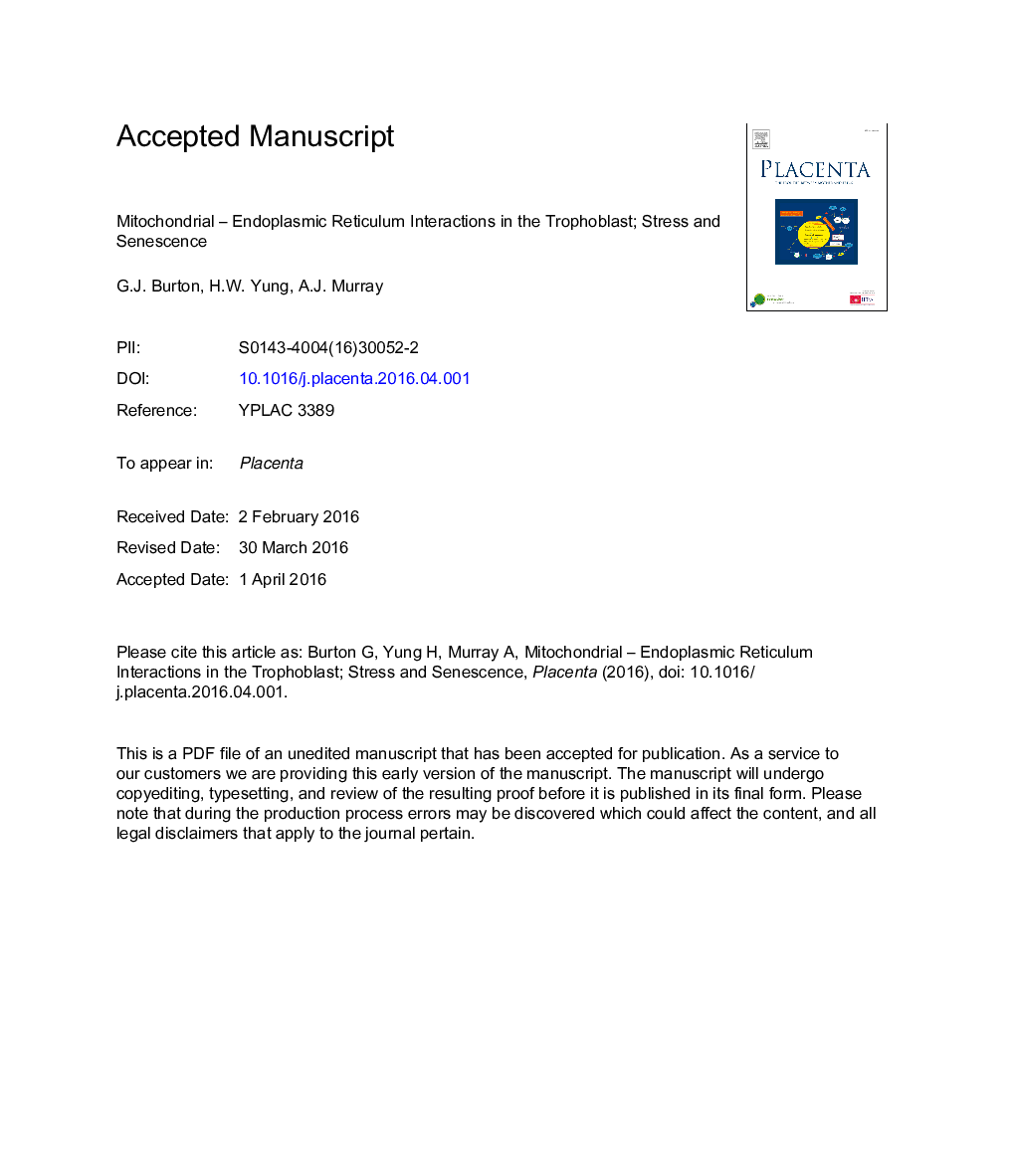| کد مقاله | کد نشریه | سال انتشار | مقاله انگلیسی | نسخه تمام متن |
|---|---|---|---|---|
| 5586131 | 1568556 | 2017 | 39 صفحه PDF | دانلود رایگان |
عنوان انگلیسی مقاله ISI
Mitochondrial - Endoplasmic reticulum interactions in the trophoblast: Stress and senescence
ترجمه فارسی عنوان
میتوکندری - تعاملات رتولوژیک اندوپلاسمی در تروفوبلاست: تنش و پیری
دانلود مقاله + سفارش ترجمه
دانلود مقاله ISI انگلیسی
رایگان برای ایرانیان
کلمات کلیدی
میتوکندریا، اندوپلاسمی رتیکولوم، استرس اکسیداتیو، پاسخ پروتئین باز شده،
موضوعات مرتبط
علوم زیستی و بیوفناوری
بیوشیمی، ژنتیک و زیست شناسی مولکولی
زیست شناسی تکاملی
چکیده انگلیسی
Placental stress has been implicated in the pathophysiology of complications of pregnancy, including growth restriction and pre-eclampsia. Initially, attention focused on oxidative stress, but recently mitochondrial and endoplasmic reticulum stress have been identified. Complex molecular interactions exist among these different forms of stress, making it unlikely that any occurs in isolation. In part, this is due to close physiological connections between the two organelles principally involved, mitochondria and the endoplasmic reticulum (ER), mediated through Ca2+ signalling. Here, we review the involvement of the mitochondria-ER unit in the generation of stress within the trophoblast, and consider consequences for obstetric outcome. Mild stress may induce adaptive responses, including upregulation of antioxidant defences and autophagy, while moderate levels may affect stem cell behaviour and reduce cell proliferation, contributing to the growth-restricted phenotype. High levels of stress can stimulate release of pro-inflammatory cytokines and anti-angiogenic factors, increasing the risk of pre-eclampsia. In addition, chronic stress may promote senescence of the trophoblast, which in other cell types leads to a pro-inflammatory senescence-associated secretory phenotype. Evidence from rodents suggests that a degree of trophoblastic stress develops with increasing gestational age in normal pregnancies. The increase in maternal concentrations of soluble fms-like tyrosine kinase-1 (sFlt-1) and reduction in placental growth factor (PlGF) suggest the same may occur in the human, starting around 30 weeks of pregnancy. Placental malperfusion, or co-existing maternal conditions, such as diabetes, will exacerbate that stress. Amelioration of trophoblastic stress should remain a research priority, but will be difficult due to the complexity of the molecular pathways involved.
ناشر
Database: Elsevier - ScienceDirect (ساینس دایرکت)
Journal: Placenta - Volume 52, April 2017, Pages 146-155
Journal: Placenta - Volume 52, April 2017, Pages 146-155
نویسندگان
G.J. Burton, H.W. Yung, A.J. Murray,
